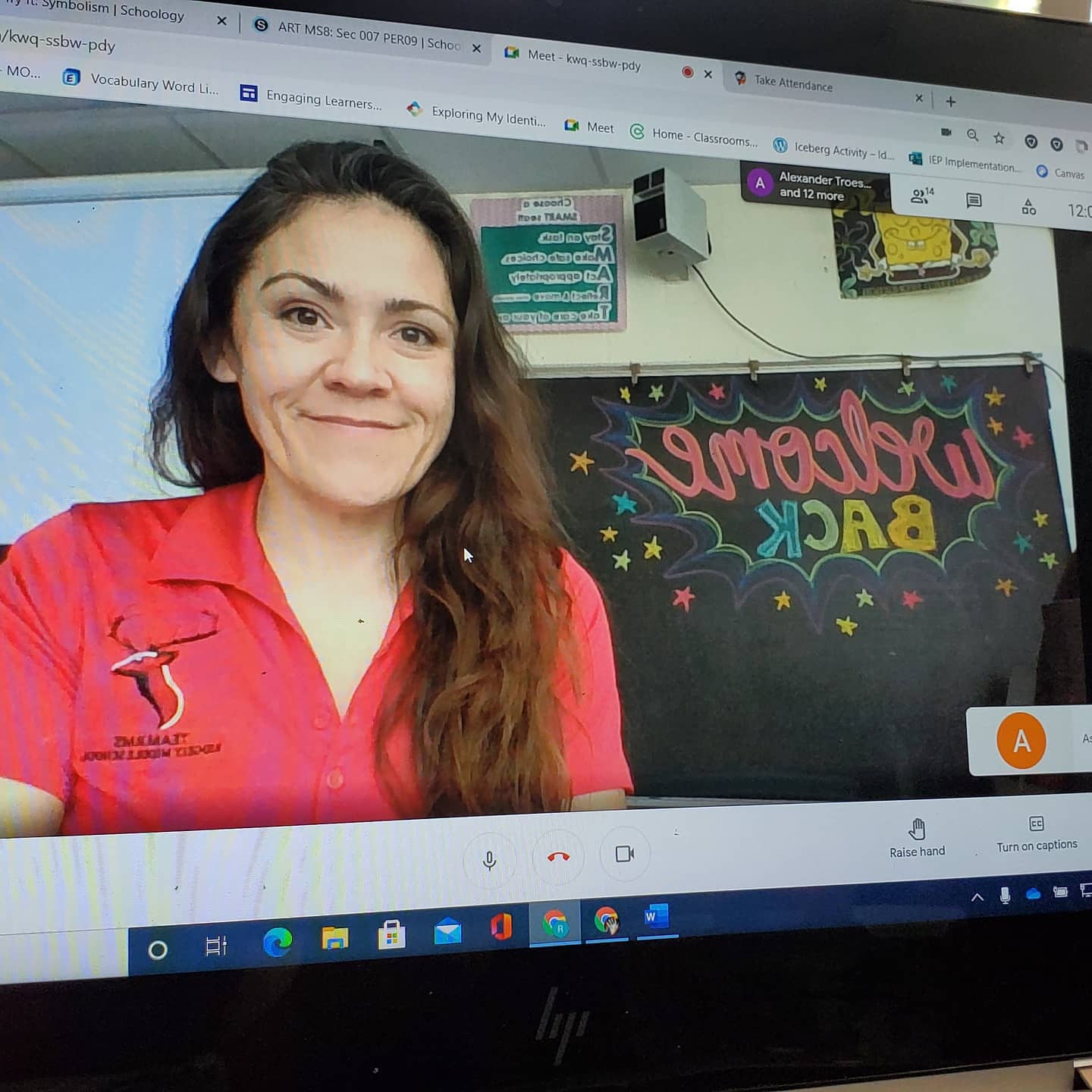In March I applied for a Connected Arts Network (CAN) Teacher Leader position, and was accepted into the program. I will be part of a virtual, nationwide Professional Learning Community (PLC). Over the course of five years, I will learn and collaborate with other visual arts educators, gaining resources to positively impact your students.
Arts educators are expected to increase their self-efficacy in and use of practices that incorporate equity, diversity, and inclusion; social-emotional learning; and leadership in their standards-based arts instruction. For students, this will lead to improvement in their expression of their identities, cultural backgrounds, and beliefs; understanding of their peers’ artworks and processes; and knowledge of the societal, historical, and cultural context of artworks.

What is CAN?
CAN stands for Connected Arts Network.
The National Art Education Association (NAEA), in partnership with the Educational Theater Association (EdTA), the National Association for Music Education (NAfME), and the National Dance Education Organization (NDEO) is launching Connected Arts Networks (CAN), a five-year grant initiative to create nationwide virtual Professional Learning Communities (PLCs) with educators in visual arts, music, theater, dance and media arts. The overarching vision for CAN is to build a sustainable model of professional learning for arts educators to strengthen their pedagogy, instruction and leadership skills in order to better serve students. This project is modeled after the successful structure of the PLC program in New York City, initiated by the Office of Arts and Special Projects (OASP), another partnering organization.
https://www.arteducators.org/news/articles/839-connected-arts-networks
As a Teacher Leader I will receive specialized virtual training to build my capacity to address Equity, Diversity, & Inclusion and Social-Emotional Learning within arts education. After year two, I will facilitate my own virtual PLC of arts educators of my same art discipline and student grade levels.
I am very excited about this opportunity and feel this is the beginning to something big.

Overall goals of the project
- To develop highly effective arts educators, building their capacity to address ED&I and SEL in their standards-based arts instruction through sustained, intensive, and job-embedded blended professional learning.
- To develop a local and national cadre of Teacher Leaders in the arts by building their content knowledge and leadership skills in order to expand the impact of arts learning for students and their communities.
- To develop accessible arts-based instructional materials, strategies, and toolkits to disseminate to arts educators nationwide, including synchronous and asynchronous professional development programs and digital resources.



Equity, Diversity & Inclusion

- Diversity is where everyone is invited to the art studio
- Inclusion means that everyone gets to contribute to the artwork
- Equity means that everyone has the opportunity to explore
These there aspects of the human journey are great to consider when collaborating and co-creating. To me they are no brainers, to create a world we all desire… we must encourage all people to find their self expression and support their journey to that the best way we can. For the Connected Arts Network teachers, we will be supporting through resources, workshops and sharing our stories.
Social Emotional Learning

Social-emotional learning (SEL) is the process of developing the self-awareness, self-control, and interpersonal skills that are vital for school, work, and life success.
Creativity is the number one way to assist in developing self-awareness and self-actualization. Interpersonal skills are developed through creative expression as well. When a person shares their stories with another, they are learning about themselves through a new perspective while teaching the other person something new as well.
We are all Connected
I am so excited to be apart of the Connected Arts Network, and to be able to have a platform to share my stories, ideas and experiences so that others might come to a place where they feel safe to fully express themselves.
So far we have had one meeting with each arts network: Visual Arts, Music, Dance and Theater. It was so inspiring to be with such amazing art educators!




























































































You must be logged in to post a comment.